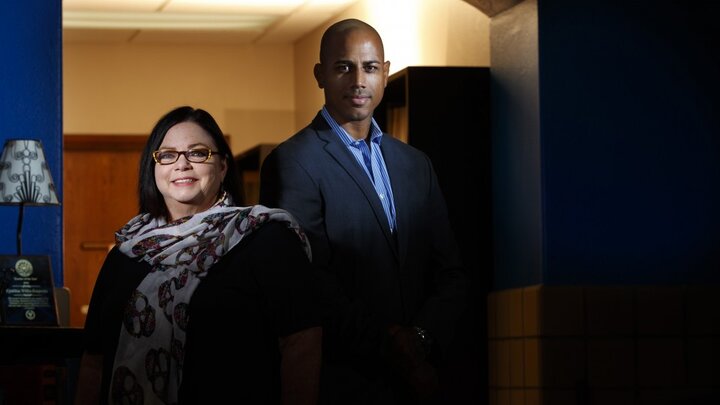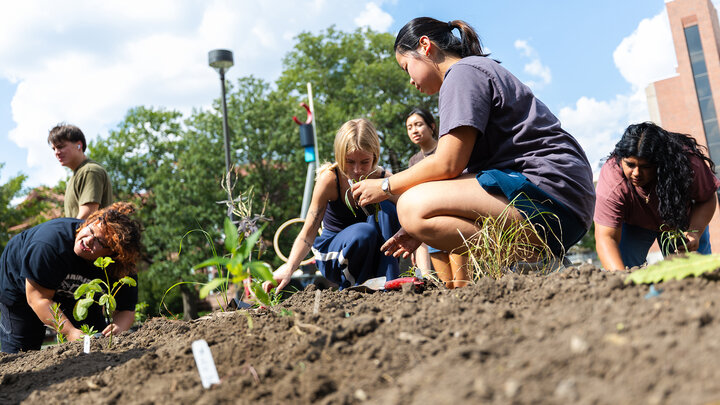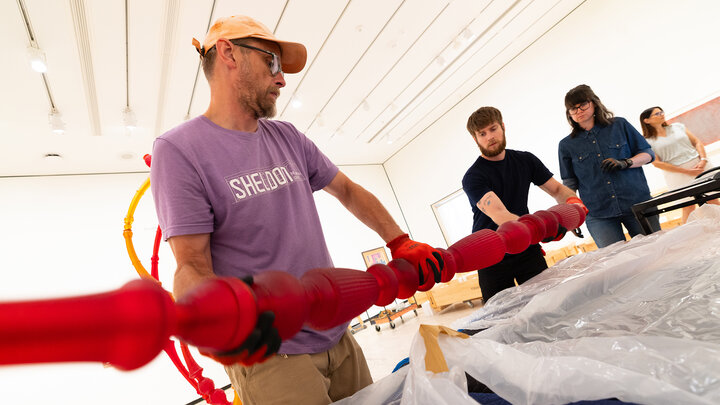Across America and around the world, criminal justice officials and mental health practitioners use research-based risk assessment instruments to evaluate an offender. Questionnaires are intended to be an objective tool for sentencing decisions, mental health placements, custody classifications and parole releases.
A forensic psychology researcher from Australia is teaming with the University of Nebraska-Lincoln's Cynthia Willis-Esqueda to investigate whether commonly used risk assessment tools are biased against Natives in the United States, Aboriginal Australians and other minorities.
Stephane Shepherd is the first recipient of the Australian Fulbright Postdoctoral Scholarship in Cultural Competence. A fellow at Swinburne University in Australia, Shepherd has been working with Willis-Esqueda, an associate professor of psychology, since last October. The new Fulbright is a joint initiative to link Australian and U.S. scholars who study cross-cultural issues.
Shepherd said he was drawn to Nebraska to work with Willis-Esqueda because of the international reputation of UNL’s Law-Psychology Program. Created in 1974, the Law-Psychology Program is one of the leading programs to train scholars engaged in basic and applied research and writing on psychosocial issues and problems related to the law. The Department of Psychology and the College of Law jointly sponsor the program, which is the world's oldest ongoing integrated program in psycholegal studies. It remains unusual in the breadth of training with students specializing in virtually any area of psycholegal studies.
Esqueda's research interests focus on the motivations for and cognitive processes about race and ethnic bias, particularly against indigenous populations.
“Cynthia has a long history working with indigenous people and the law and conducting research on race, ethnicity and health,” he said. “A mutual colleague of ours introduced us as I was applying for the scholarship and we devised a plan of research for my Fulbright year.”
Aboriginal Australians, he said, are overrepresented in the criminal justice system in Australia, which is a byproduct of enduring injustices and discrimination. Shepherd said he identified problems with the assessments when he administered them in youth detention facilities as a psychology researcher. Growing up as a person of color in Australia — he is of creole, or French and African, descent — helped him recognize obvious cultural differences, Shepherd said.
“Sometimes the items just didn’t make sense (to young minority detainees),” he said. “I had to use my own cultural knowledge to frame it in a different way in order for the information to make sense to them.”
In the first of several studies planned by the duo, Shepherd and Willis-Esqueda interviewed about 35 clinicians from across the United States and Canada about questions contained on the Structured Assessment of Violence Risk in Youth, one of the most commonly used risk assessment instruments. Most of the participating health and legal professionals are Native.
Although their findings likely will not be published until next year, Shepherd and Willis-Esqueda said their preliminary results indicate problems exist: “Participants believed that the instrument serves to negatively label the young native youth,” Shepherd said. “It criminalizes poverty, criminalizes learning difficulties, uses culturally insensitive language and it is likely to overestimate risk.”
In fact, shortly before Shepherd’s arrival in the United States, a Canadian federal court judge cautioned against further use of five widely used instruments with Aboriginal inmates in Canada. The court concluded the research base supporting the validity of the instruments with Canadian Aboriginal prisoners was inadequate.
Willis-Esqueda and Shepherd said they were not trying to abolish risk assessment instruments. In many respects, the instruments are less subjective than relying solely on the judgment of a probation officer or a prison intake supervisor.
“To be fair to the legal community, they are under tremendous pressure to assess and respond to the increasing numbers of people who are coming into the system,” Willis-Esqueda said. “Their absolute goal is to be as accurate and fair as possible, but sometimes the system is so overwhelmed that the use of something that is fast, inexpensive and appears to be accurate is what the professionals are going to use in that situation.”
Problems arise, however, if decisions are made solely on the instrument, without other information about an offender or patient. It gives rise to what experts call “statistical justice,” Shepherd said.
“You’re almost curtailing someone’s liberty because of something they might do in the future, based on a bunch of risk factors,” he said. “If you look at the risk items on the instrument, a lot of it is about being in poverty: Having impoverished circumstances, having delinquent peers, coming from a dysfunctional community. Basically any one who’s from that situation is going to get a higher score on these instruments. So in some ways it is criminalizing poverty.”
Instruments have been developed in one of two ways, either by identifying common traits related to re-offense in a specific sample of offenders or by using traits that have been identified in research literature. Most of the offenders used in those studies are from white majority culture, however.
“The instrument is based on western behavioral norms and doesn’t consider cultural expressions of behavior,” Shepherd said. For example, an indigenous child who lives with a grandparent or an aunt may well be part of an intact family, yet the instrument might count that as a risk factor as being from a broken home.
A person who doesn’t answer questions or doesn’t show emotion may be following cultural norms, but the instrument might indicate that person as lacking remorse or being resistant.
The researchers' partnership will continue after Shepherd returns to Australia in late September. He and Willis-Esqueda said many of the issues with the risk assessment instruments likely can be resolved by tweaking some questions or perhaps adding culturally specific items to the instrument. They envision future research collaboration to investigate possible revisions.




